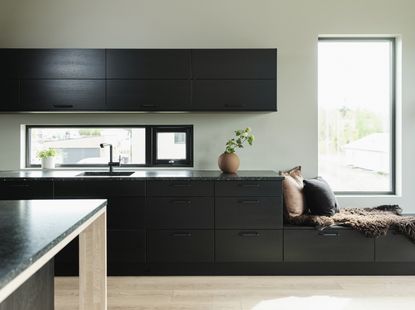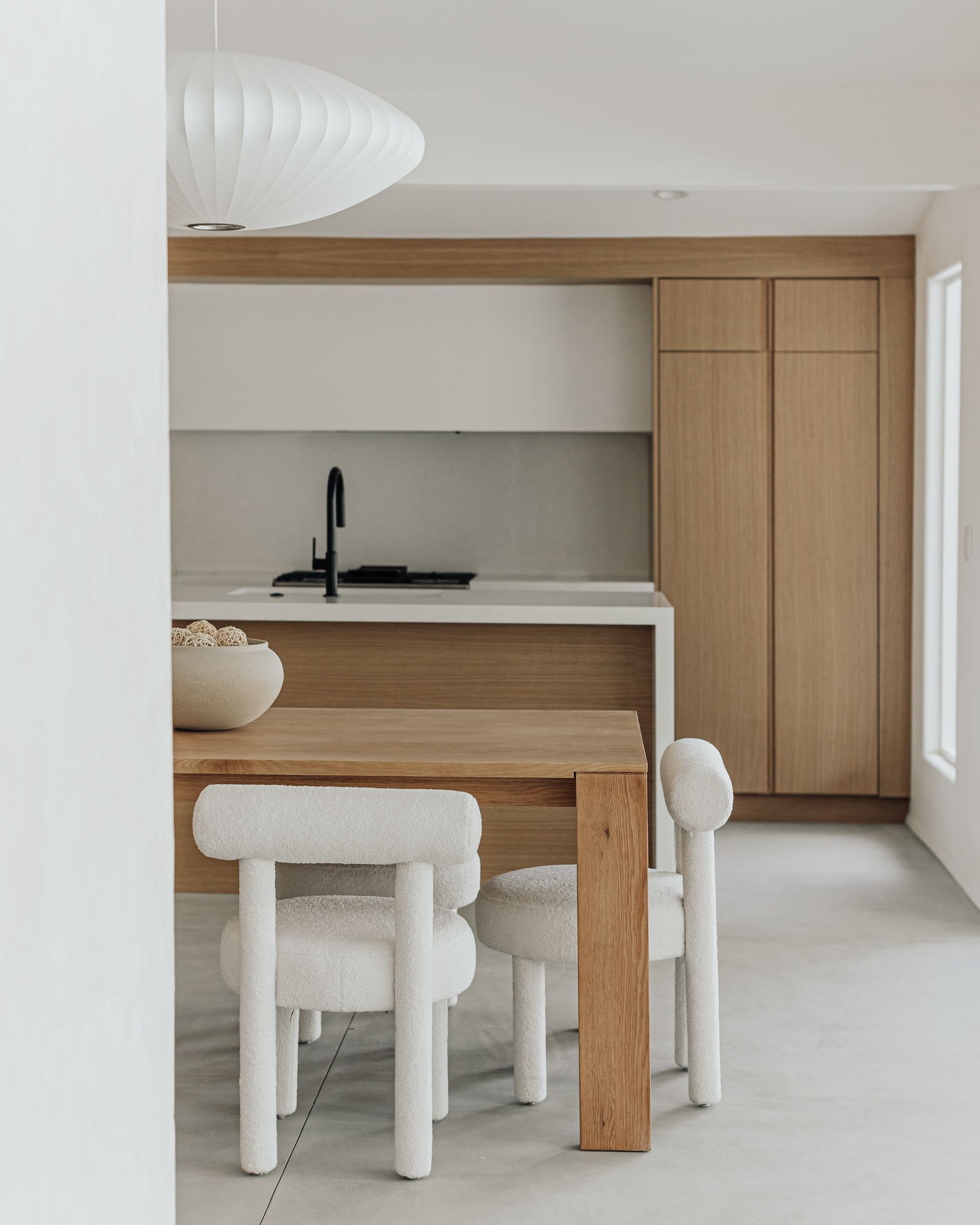I tried the ‘ruthless’ decluttering rule that experts swear by – this is why it worked for me
The 20/20 rule for decluttering helps you let go of stuff you don't need so you can do more with less. These professional organizers explain how it works


Getting to grips with decluttering is no easy feat. For most of us, letting go of furniture, decor and household items that we've carried with us for years is difficult. Besides the sentimental attachment, there's the niggling voice in your head convincing you that maybe, just maybe, you'll find a use for that object you were about to throw away. Well, this is where the best-kept secret of professional declutterers comes in handy: the 20/20 rule.
After recently moving home, I knew I had too much stuff for my new rented apartment. As the sort of person who keeps the receipts from memorable days out (yes, really), I needed a method to help me get rid of the unnecessary things I'd accumulated. This simple rule for how to declutter a room was my go-to.
So what is the 20/20 rule for decluttering? You'll be pleased to learn that it's not a technical mathematic equation nor is it a rule on recommended ratios. The 20/20 rule is a nifty trick that helps you to be more ruthless at throwing away unnecessary stuff by asking yourself two easy questions, and professional organizers and declutterers swear by it.
Whether you're a hardcore minimalist or a fan of a more eclectic, maximalist style, we're all guilty of accumulating stuff we just don't need, be it hiding within drawers or out on display. Although we all deserve to have a few things that we want rather than need, holding onto stuff that contributes nothing to your home is just unnecessary. It can be bad for the psyche too - as the saying goes, 'tidy home, tidy mind'.
Here, we've asked some expert declutterers to decode the 20/20 rule alongside some tips for best practice so you can have a more organized and simplified home.

Lilith is an expert at following news and trends across the world of interior design. A strong believer that a tidy home is a happy one, she's committed to helping readers organize their spaces through sharing practical tips and guides. For this piece she asked professional declutters to share their best kept secret: the 20/20 rule
What is the 20/20 rule for decluttering?

We all need a helping hand every now and then, especially during a decluttering task when so many of us find ourselves plagued by indecisiveness. That's where the 20/20 rule comes in, a decluttering tip that challenges you to ask yourself if you can really live without a certain item.
'The 20/20 rule of decluttering is best applied to items in our homes that we are on the fence about letting go,' explains Maureen Nuccitelli, professional declutterer and consultant at The Organizing Diva. She says it's best applied to useful items, but we aren't making much use of at that current time. 'We then decide if we can let it go by asking ourselves if we can replace it for less than $20 in less than 20 minutes from our current location,' she says.
That's all it takes - one easy question that helps you decide if your stuff is replaceable or not (and in most cases, it will be). Say you're organizing your kitchen drawer and you come across a utensil that you haven't used in months. Can you buy it again for less than $20? Probably? And can you replace it in less than 20 minutes from your location? Almost certainly, if you count online stores like Amazon. By following the rule you'll no longer find yourself hanging on to stuff you hardly use, and the chances are you won't end up missing it either!
Why is the 20/20 rule so effective?

So why does the 20/20 rule work so well when it comes to how to organize a room with too much stuff in? It seems achingly simple, but somehow it encourages even the most sentimental hoarders among us to part with at least some of the things they no longer need.
'The rule works so well because we can easily apply the question to most things in our home,' says Maureen. 'Obviously, expensive and sentimental things do not fulfill the parameter, but so many other items do. It makes going through drawers, closets, and bins so much easier because we don’t have to angst over every decision about every little thing.'
Even once we motivate ourselves to declutter, many of us find that we struggle to be ruthless enough to even throw away a full bag of items we no longer need. According to Ben Soreff, a declutterer at House to Home Organizing, this is often due to our fear of regret, rather than our actual attachment to that specific thing itself. He says it's important to make sure that the 20/20 rule doesn't feed this fear of regret.
'One of the most important things about organizing is not to have regret,' he explains. 'We don't want to purge just for the sake of purging. If you threw out everything you owned, you still wouldn't actually be organized. As well as asking how hard the item is to get and how expensive it is, ask why you're keeping it.' The answer to this question will help minimize the chance of regretting its loss later.
Why do rules help guide us when decluttering?

The thought of repeating the same question to yourself with every item you pick up during your declutter might sound tedious, but effective rules like these are key to keeping us on track when sorting our spaces. With rules like the 20/20 method, you have a clear knowledge of what needs to be done to achieve your goal. What's more, it helps you speed up the process, too.
As Blanca Aguirrezabal, expert declutterer at The Blog Stuff explains: 'The act of setting rules helps organize and declutter a home because it provides a framework within which to operate. Having rules gives you a set of guidelines to follow when deciding what to keep and what to get rid of, which can make the process of decluttering less overwhelming.'
If you want a more minimalistic interior design style, the 20/20 rule is especially useful in helping you get rid of stuff. 'This is because the rule tends to go along with the spirit of trying to do more with less,' says Melissa Gugni, owner of Melissa Gugni Organizing. 'I actually find it a fun challenge when I realize that I have gotten rid of something that I ended up needing and figured out a substitute that worked even better!' An easy decluttering rule that promises swift results? We're in!
Be The First To Know
The Livingetc newsletter is your shortcut to the now and the next in home design. Subscribe today to receive a stunning free 200-page book of the best homes from around the world.

Lilith Hudson is the News Editor at Livingetc, and an expert at decoding trends and reporting on them as they happen. Writing news, features, and explainers for our digital platform, she's the go-to person for all the latest micro-trends, interior hacks, and color inspiration you need in your home. Lilith discovered a love for lifestyle journalism during her BA in English and Philosophy at the University of Nottingham where she spent more time writing for her student magazine than she did studying. After graduating, she decided to take things a step further and now holds an MA in Magazine Journalism from City, University of London, with previous experience at the Saturday Times Magazine, Evening Standard, DJ Mag, and The Simple Things Magazine. At weekends you'll find her renovating a tiny one-up, one-down annex next to her Dad's holiday cottage in the Derbyshire dales where she applies all the latest design ideas she's picked up through the week.
-
 What are the Most Comfortable Pillowcases? From Temperature Regulating to the Best for Your Skin
What are the Most Comfortable Pillowcases? From Temperature Regulating to the Best for Your SkinWhen you're looking for comfort in your pillowcases, material matters. These are the best you can buy
By Faaizah Shah Published
-
 5 Simple, but Genius Bathroom Layout Tricks That Will Make Your Space Work so Much Harder
5 Simple, but Genius Bathroom Layout Tricks That Will Make Your Space Work so Much HarderSmall switches to how you lay out your bathroom that help make the most of a small space
By Luke Arthur Wells Published

